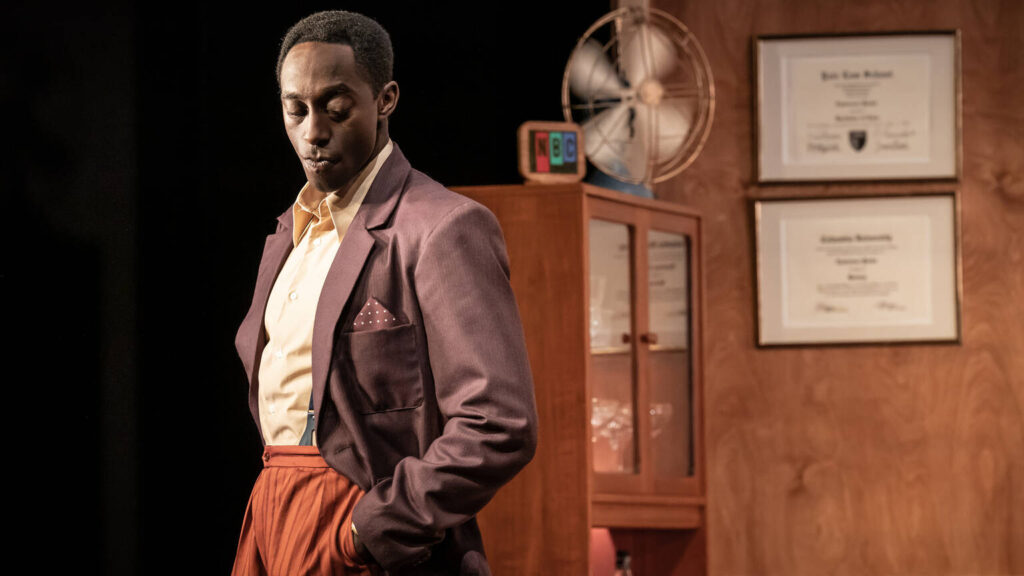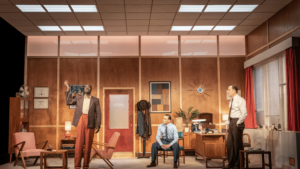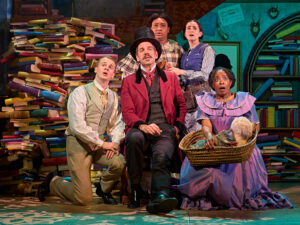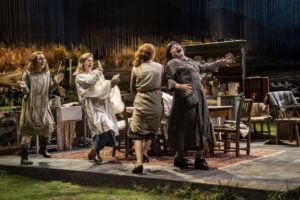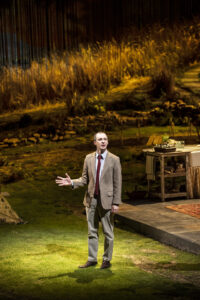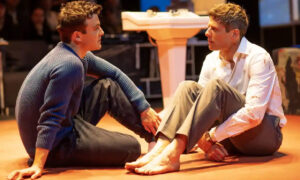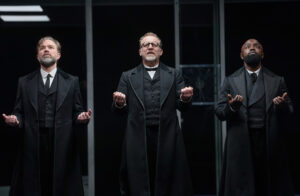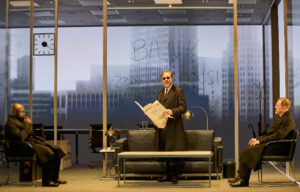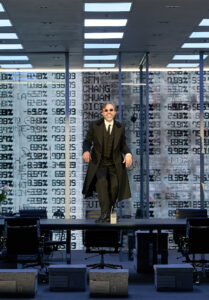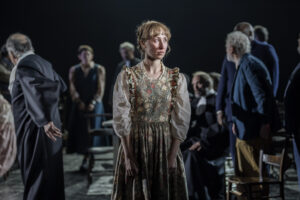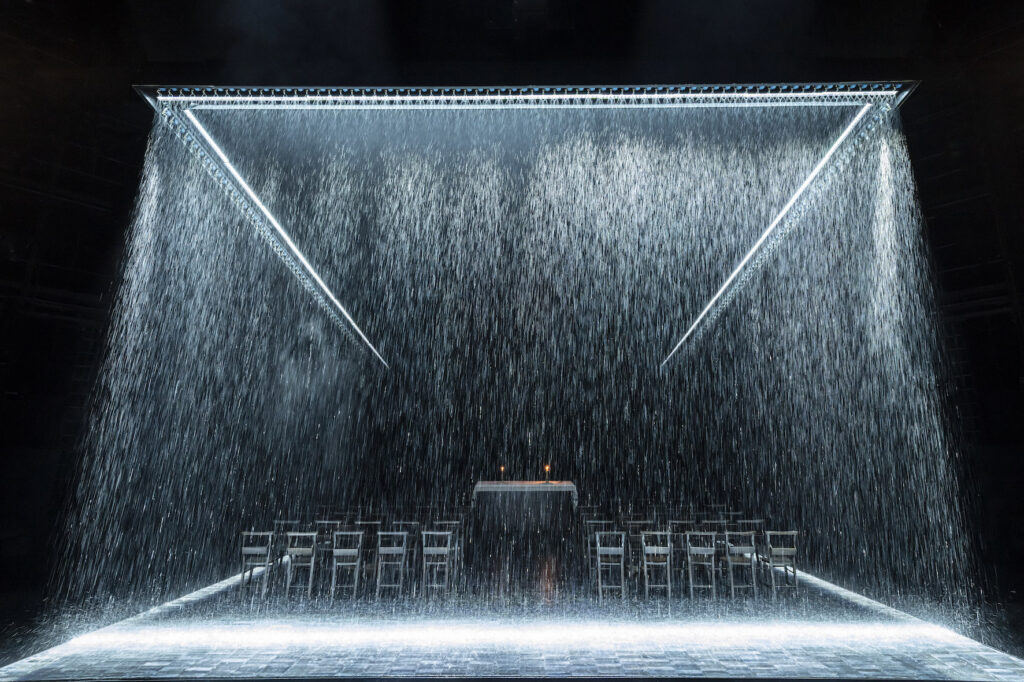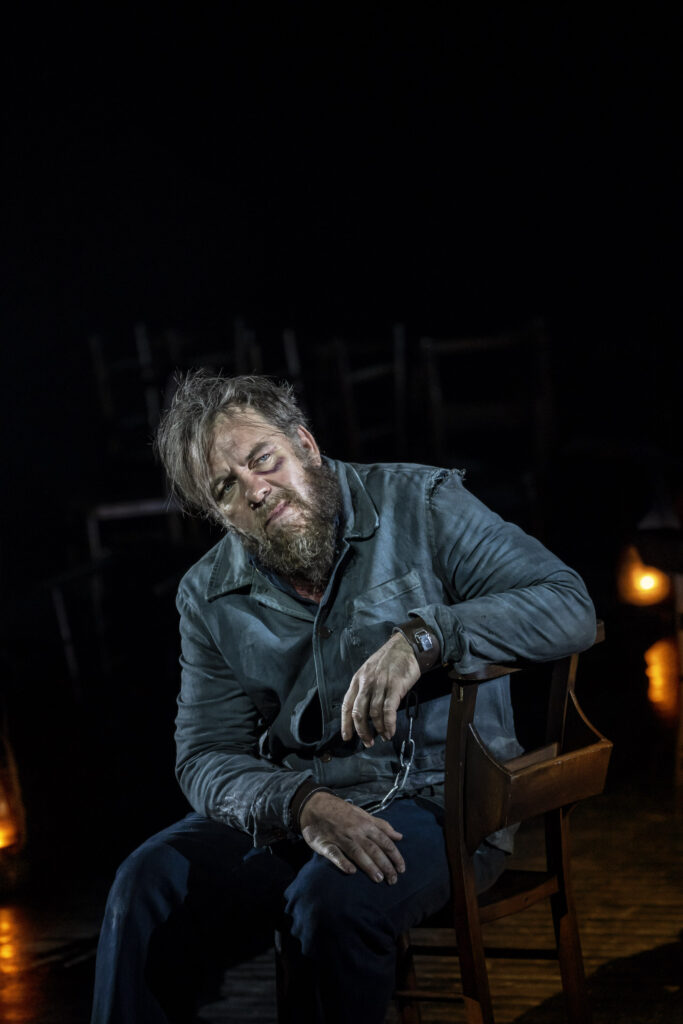Assassins looks and sounds great but misses its target
★★★
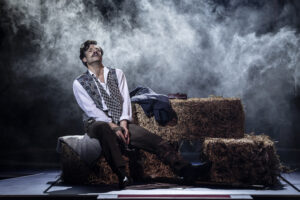
Chichester Festival Theatre’s reputation as musicals producer is second to none but its latest revival is, for me, a rare mis-step.
Stephen Sondheim’s Assassins may not rank as one of his greatest works, but its reputation has grown since its premiere in 1990. The bleak musical comedy, with book by John Weidman, shows how the American Dream- that anyone can be a success- has become a nightmare. Its bleak view is that celebrity has become a replacement for real achievement, and that one particular short cut to fame is assassinating a President.
A string of would be assassins follows the precedent set by John Wilkes Booth, who shot Abraham Lincoln, and leads ultimately to the traumatic loss of John Kennedy at the hands of Lee Harvey Oswald. However, we gain little understanding of the individuals beyond their desire for fame for themselves or their cause (if they have one).
There is a lot to enjoy along the journey. There are songs for a start, which are mainly pastiches of various kinds of popular American music. They may not be Sondheim’s finest tunes but the use of popular music styles to talk about murder is horrifying. There’s the jaunty anthem Everybody’s Got The Right, the right to their dream that is, that bookends the show; and Gun Song, a romantic love song to a killing weapon; and Something Just Broke, a hauntingly sad reaction to the death of Kennedy.
The show originally used the device of a fairground shooting gallery in which contestants are given a gun and invited to take a shot at a President for the prize of fame if they succeed. It’s a metaphor that serves well the concept of the randomness of celebrity. As each takes his or her shot, they sink into oblivion, forming a disappointed community until together they encourage Oswald to commit a presidential assassination that shocked the world.
So where did the Chichester production go wrong?
Not with the performers, who are excellent. The characters they play do not have much depth, but are nevertheless given performances both vivid and amusing. Peter Forbes is suitably authoritative and sinister as The Proprietor or host; Danny Mac, with a strong singing voice, is the handsome and manipulative John Wilkes Booth, who you can believe would inspire the others; Harry Hepple is outstanding as the easy-going Charles Guiteau, who killed President Garfield because he believed he should have been made French ambassador; Sam Oladeinde shines as Leon Czolgosz, the shy, angry killer of President McKinley; Nick Holder as Samuel Byck wanders around the auditorium in a soiled Santa Claus outfit ranting about President Nixon (and Leonard Bernstein, for that matter) in a funny but frightening performance; Amy Booth-Steel is Sarah Jane Moore, the would be assassin of President Ford whose inability to shoot straight gains the most laughs; and Samuel Thomas is a chilling Lee Harvey Oswald, a man so feeble in his resolve as to make you squirm in your seat at the arbitrary nature of Kennedy’s death.
Why improve the perfect musical?
For me, the problem with the production was the way director Polly Findlay updated the concept to cover the modern cult of celebrity, starting with a reference to the recent celebrity President, Donald Trump. So, the on-stage band wear red baseball caps, and, as the audience enter, there are actors in animal mascot costumes encouraging Mexican waves.
The host looks very like Mr Trump. But why is the President handing out the guns? Trump may have encouraged the storming of the Capitol building, but this updating means you straightaway lose the distinction between people who achieve their dream of celebrity through assassinating a President and the Presidents themselves, who achieved their fame through a political and fairly democratic process.

In support of this change of emphasis, Lizzie Clachan’s wonderful set places the Oval Office rather than a fairground in the centre. Giant video screens on either side show the choice of targets, turning the original shooting gallery concept into a game show, suggesting the way TV turns nonentities into household names. Three TV news reporters replace the single Balladeer to provide the commentary. They hold their mics like guns, perhaps indicating the media’s contribution to the cult of celebrity killers. It’s certainly a long way from the fairground. This is all the more surprising since Stephen Sondheim once said he couldn’t think how to improve Assassins.
This is a musical that takes a superficial meander through various would-be Presidential assassins. It’s loosely held together by a concept that they are a corruption of the American Dream. Its fabric is too delicate to accommodate the tacking on of references to modern day celebrity. The Watermill Theatre production of 2019 didn’t stray from the fairground concept until the death of Kennedy, and was, in my opinion, the better for that single focus.
That quibble aside, Assassins is a musical worth reviving and Chichester Festival Theatre has come up with a fabulous looking production with superb performances.
Assassins can be seen at Chichester Festival Theatre until 24 June 2023.
Paul received a complimentary review ticket from the theatre.
Click here to watch this review on our YouTube channel Theatre.Reviews With Paul Seven
